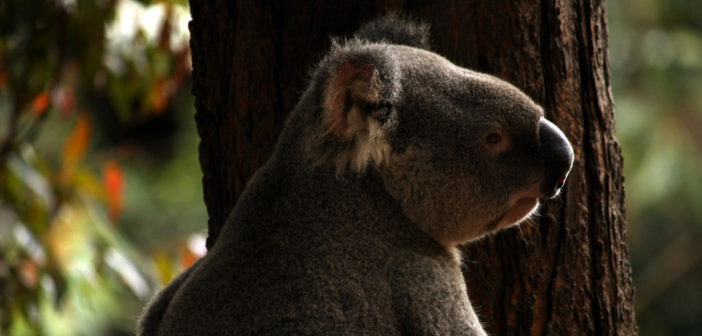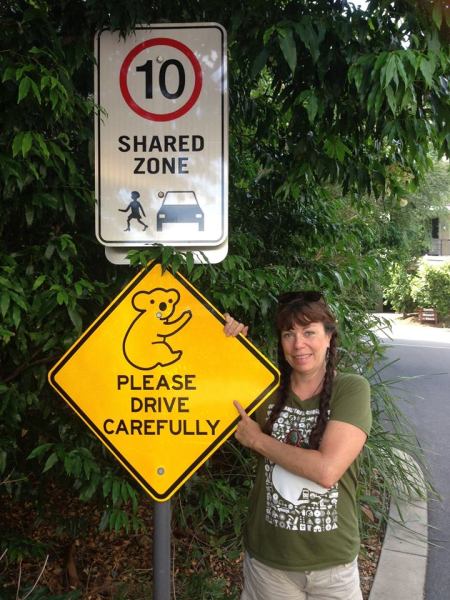The effects of climate change on koalas and the ravages of diseases such as chlamydia were main issues raised at a recent national conference about the beleaguered animal, and delegates heard that koalas are already functionally extinct in some areas of Australia.
 There are some success stories, such as the population of koalas increasing to more than 3,000 in the Southern Highlands of New South Wales, and positive collaboration with the local council in Ipswich, and there have been numerous advances in scientific research.
There are some success stories, such as the population of koalas increasing to more than 3,000 in the Southern Highlands of New South Wales, and positive collaboration with the local council in Ipswich, and there have been numerous advances in scientific research.
However, koalas continue to die in their thousands as their habitat disappears, and they are killed by dogs, in car hits, and in bushfires.
It was made clear at the conference that, for koalas to survive, protection of their habitat has to be the top priority.
Nearly two hundred people attended the three-day gathering, which was held in June in Port Macquarie in the eastern Australian state of New South Wales.
The event, entitled “Their Future is in our Hands”, was organised by the Port Macquarie Koala Hospital, with the backing of the local council.
The conference brought together a wide range of delegates, including carers, campaigners, scientists, and veterinarians.
The founder of Queensland Koala Crusaders, Meghan Halverson, said that combining efforts and resources was the only way to win the war to save the koala. “And a war it is,” she said.
At the last koala conference in 2013, Halverson’s message was “while we are talking they are dying”.
Four years later, everyone is working harder and more collaboratively, Halverson says, “but we are still talking and they are still dying”.
Halverson says that, in Queensland, one million hectares of land have been cleared of native vegetation. “Of this, the WWF estimates that at least 84,000 hectares are in critical koala habitat.”
Koala carer Wanda Grabowski, who is the president and secretary of Koala Action Inc. (KAI), based in Queensland, told Changing Times: “Whatever remains of mature habitat has to be maintained, and improved when necessary. You cannot cut down any more trees in koala habitat; end of story.”
Over the past twenty years, koala numbers have dropped by 40 percent in Queensland and by a third in New South Wales. In the Pilliga Forest of northwest New South Wales, three-quarters of the koala population has been wiped out since 2000.
Several of the speakers at Port Macquarie spoke about the effects of climate change on koalas.
Ecologist from the Port Macquarie-Hastings council Rebecca Montague-Drake said that climate change was likely to have severe impacts on the animals.
An increasing number of wildfires, she said, would lead to direct mortality and habitat loss.
“Drought leads to reduced leaf water content, which will leave koalas vulnerable to hotter conditions. It will also reduce the canopy,” she told delegates.
Montague-Drake said that koala populations along the eastern seaboard, particularly in New South Wales and Queensland, were in great peril, and many of them were on “a steady downward run to extinction”.
Much of the Port Macquarie conference was taken up with reports on scientific research into the diseases that affect koalas.
 Microbiologist Adam Polkinghorne from the University of the Sunshine Coast talked about the Chlamydia pecorum infections that are widespread in koala populations and are also highly prevalent in Australian livestock.
Microbiologist Adam Polkinghorne from the University of the Sunshine Coast talked about the Chlamydia pecorum infections that are widespread in koala populations and are also highly prevalent in Australian livestock.
Delegates also heard about the impact of the koala retrovirus (KoRV), and about the management of oxalate nephrosis (renal disease) in koalas in a captive environment.
Tracey Wilson from Mosswood Wildlife Rescue & Rehabilitation in southwest Victoria told delegates about the plight of koalas living on blue gum plantations.
“Koalas have moved into these plantations and have thrived,” she said. “However, the impact on the landscape and the koalas when these plantations are harvested is devastating.”
Wilson told delegates that koalas are now eating coppice (the stumps that are left after harvesting).
“We have reduced these arboreal animals to grazing like sheep,” she said.
While the main issues raised at the 2017 koala conference were the same as those tackled at the previous national conference in 2013, delegates did learn about medical improvements and new survey techniques and methodologies that are providing more accurate information about koalas.
“The science is certainly getting better,” Wanda Grabowski said. “We are finding options that will ensure that koalas are healthier and that a greater number of the population breed, all of which is a good thing.
“However, if we cannot save the habitat, then we won’t have any place to put these animals once they have been rehabilitated.”
This is an extract from Annette Gartland’s article on Changing Times. You can read the full story at https://time2transcend.wordpress.com/2017/06/10/koalas-are-being-driven-towards-extinction/
Featured image credit Nick Hewson, CC BY 2.0






